Search the glossary for frequently used terms related to Delftware.
B
-
Biscuit
Unglazed earthenware that has been fired once.
-
Biscuit firing
The initial firing of unglazed earthenware, which produces biscuit wares.
-
Body
Fired clay with no glaze or enamelling.
C
-
Chamotte clay
Pre-fired clay that is added to raw clay used to make pots in order to produce a stronger body.
-
Charger
Chargers have a diameter of 26 centimetres or more. Smaller versions are generally referred to as plates.
-
Chinoiserie
The use of motifs derived from Chinese art to give objects made in Western Europe an ‘exotic’ appearance. The Delft pottery industry was instrumental in establishing this fashion. It is reflected not only in the decorative motifs they applied to their products, but also in their shape.
-
Craquelure (crackle)
Hairline cracks in the glaze caused during the glaze firing as the glaze and the body shrink at different rates.
-
Creamware
A hard type of earthenware with a cream-coloured body covered with a transparent lead glaze.
-
Crystalline glaze
Glaze with small crystals in the surface formed as a result of a very gradual cooling of the metal oxides in the glaze.
D
-
Delftware
English term for tin-glazed earthenware, in reference to the Dutch town of Delft. Written with an initial capital it refers to Delft earthenware; written in lower case it refers to tin-glazed earthenware that can be made anywhere.
E
-
Earthenware
Type of ceramic with a porous body that is created at a firing temperature of approx. 800 to max. 1150 ºC. Earthenware must be glazed to make it completely watertight.
-
Eggshell porcelain
Porcelain with extremely thin walls, to the point of translucence. The material is so delicate, it is reminiscent of eggshells. The first eggshell porcelain was made during the Ming dynasty in China. Around 1900 it was also produced by the Rozenburg pottery in The Hague.
-
Enamel
Vitreous pigment (either opaque or transparent) that is coloured with metal oxides.
F
-
Factory mark
Mark referring to the pottery. The mark usually references the name of the pottery or of its proprietor or manager, either with symbols or initials. Figurative marks were also used
-
Faience
Traditional term for tin-glazed earthenware. Earthenware objects with a thin body that are completely covered with a layer of tin glaze (generally white). The objects have a smooth front. On the bottom of chargers the imprints of the pegs on which the objects rest inside the saggars during firing can be seen. Probably references the name of the city of Faenza, an Italian centre of production.
-
Familles
Enamelled Chinese porcelain is traditionally divided into different colour families (‘famille’ being French for family): vert (green), rose (pink), noir (black) and jaune (yellow). These categories were defined in Europe in the 19th century.
-
Firing
The entire process of heating and cooling off pottery in the kiln. There were usually two firings: the biscuit firing and the glaze or glost firing.
-
Flatware
Collective term for flat items like plates and platters, to distinguish them from hollow wares.
G
-
Glaze
Vitreous layer on the surface of ceramics.
-
Glaze or glost firing
The second firing, designed to fuse the glaze to the surface at a temperature of approx. 1000° C. To prevent objects from fusing together in the kiln, they are separated using spurs or pegs and saggars.
-
Grand feu technique
The process of firing objects at a temperature of approx. 1000°C. Exclusively applied during the second (glaze or glost) firing.
I
-
Imari porcelain
Type of Japanese porcelain whose decorative style, named after the port of Imari, was imitated in (a.o. China and also) Delft. The blue, red and gold porcelain first appeared on the Dutch market around 1680.
K
-
Kakiemon porcelain
Type of Japanese porcelain whose decorative style was imitated in Delft, among other places. The multicoloured porcelain with refined decoration (named after a family of potters) first appeared on the Dutch market around 1680.
-
Kangxi porcelain
Type of Chinese porcelain developed during the Kangxi period in the Qing dynasty (1662-1722).
-
Kaolin or China clay
Type of clay essential for the production of porcelain.
-
Kendi
Jug with a round body. The neck or spout sits on the rounded shoulder. Some are in the shape of animals (including elephants, ducks and fish). Kendi were used throughout Southeast Asia and the Middle East. A porcelain version of this form was introduced to the Netherlands in the early 17th century.
-
Kraak ware or Kraak porcelain (see Wanli porcelain)
A type of Chinese porcelain made in the time of Emperor Wanli (1573-1619) and his successors, right through to the fall of the Ming dynasty in 1644. The distinctive blue decoration is divided into panels and applied on a white ground.
-
Kwaarten
Traditional Dutch term for the application of a top layer of transparent lead glaze (kwaart) to produce a brilliantly shiny surface. Also known as coperta.
L
-
Lead glaze
A transparent glaze whose main component is lead oxide.
-
Lustre glaze
Glaze with a metallic shine, obtained by the addition of metal oxides.
M
-
Majolica
Majolica is a term traditionally used in the Netherlands for earthenware that has a layer of tin glaze on the front and transparent lead glaze on the back. The use of spurs during the firing process left characteristic spur marks on the surface. Possibly derived from Mallorca (or Majorca), the Spanish island through which these wares were traded. Internationally, maiolica (with an i) is used to refer to Italian tin-glazed earthenware, and majolica (with a j) is used for 19th- and 20th-century lead-glazed earthenware. To prevent confusion, the preferred term for the wares produced in the Netherlands is now lead- and tin-glazed earthenware.
-
Majolica industry
The majolica production industry, introduced into northwestern Europe in the 16th century by craftsmen from southern Europe. The Dutch word ‘nijverheid’ is traditionally used to describe these industries.
-
Maker’s mark
A mark was used by a master craftsman on objects produced in his workshop to show where they were made. The marks were usually prescribed by the local guild, and were particularly common on silver and gold objects. On Dutch Delftware they were used inconsistently between c. 1670-1800. The mark often (but not always) refers to the name of the owner or factory.
-
Marl
Adding earth from Tournai (known in Dutch as Doornikse aarde) to clay produced a pale yellow body.
-
Monochrome
Decoration in a single colour. In Delft usually blue.
-
Muffle kiln
Small kiln used to fire smaller batches of pots. Some gilders had kilns of this type on the premises, presumably to fire gilded pieces using the petit feu technique. Hence the Dutch term ‘goudschilderoven’ (= gilder’s kiln).
O
-
Oxidation firing
Allowing oxygen in during the glaze firing so that clay containing iron oxide, for example, turns red.
P
-
Pâte-sur-pâte
Decoration produced on porcelain using semi-liquid white porcelain slip, sometimes tinted with metal oxides.
-
Petit feu technique
The process of firing objects at a temperature of approx. 600° C. This was usually done in small muffle kilns, known in Dutch as goudschilderovens (= gilders’ kilns), used for gilded objects and delicate colours that would be incinerated at higher temperatures.
-
Plate
Plates have a diameter up to 26 centimetres. If they are any larger, they can also be referred to as platters.
-
Plateel
Contenporary term for lead- and tin-glazed earthenware (majolica and faience). Also used to reference typical wares produced in the Netherlands in the early twentieth century.
-
Plateelbakker
Dutch term meaning a producer of lead- and tin-glazed earthenware (majolica and faience).
-
Plateelbakkerij
Dutch term for a pottery producing lead- and tin-glazed earthenware (majolica and faience).
-
Plateelschilder
Dutch term for a painter specially trained to decorate earthenware.
-
Polychrome
Decoration in more than one colour.
-
Porcelain
Type of ceramic with a hard, non-porous body created by firing at a temperature of 1300-1500 ºC.
-
Porceleyn (Porceleyne, porcellyne etc.)
The old name used in Delft for tin-glazed earthenware that was meant to imitate porcelain.
-
Pounce
Paper on which the outlines of a decorative design have been pricked out. The design is transferred to the object through the holes using powdered charcoal.
R
-
Reduction firing
A technique whereby the amount of oxygen entering the kiln during glaze firing (at a relatively high temperature) is reduced in order to produce colour variations and textured effects in the glaze.
-
Running glaze
Glaze with a low melting point that runs when fired. Running glazes are applied on top of a glaze with a higher melting point.
S
-
Saggar
A cylindrical earthenware container in which earthenware objects would be stacked for firing. To prevent the objects from fusing to the surface, each one would rest on triangular pegs inserted through the wall of the saggar. To protect the pots from kiln fumes, the saggar was closed during firing by placing tiles on top and underneath.
-
Sgrafitto
Technique whereby decoration is incised into the surface of a ceramic object that is covered with a layer of slip (engobe).
-
Sinter engobe
A blend of engobe and a vitreous substance that produces a glaze-like shine on a ceramic object.
-
Slip
Liquid clay used as an adhesive to stick together the different parts of an object during the production process.
-
Spur
Ceramic support used to separate pieces of majolica in the kiln during glaze firing and stop the pieces fusing together.
-
Spur mark
Scar on the front of a piece of majolica caused by the spur used to support it in the kiln.
-
Stoneware
Hard, non-porous type of ceramic fired at approx. 1200-1300 ºC.
T
-
Thrower
A craftsman who makes objects on a potter’s wheel.
-
Tin glaze bath
Tub containing tin glaze into which the wares (biscuit) are dipped after the first firing, creating a white surface to which the painter can then apply the decoration.
-
Transfer printing
Technique whereby a design printed on prepared paper is transferred to the surface of a ceramic object.
-
Transitional porcelain
Blue-and-white Chinese porcelain produced in the period of transition between the Ming and Qing dynasties (during the reign of Emperor Shunzhi between 1644 and 1661). Its decoration is characterised by continuous narrative scenes.
W
-
Wanli porcelain
A type of Chinese porcelain made in the time of Emperor Wanli (1573-1619) and his successors, right through to the fall of the Ming dynasty in 1644. The examples exported to the West have distinctive blue decoration divided into panels and applied on a white ground. Also known as kraak porcelain in the West.
X
-
XRF
Research technology based on x-ray fluorescence used to measure the basic composition of a material. In recent years it has been used increasingly in studies of Delftware.











